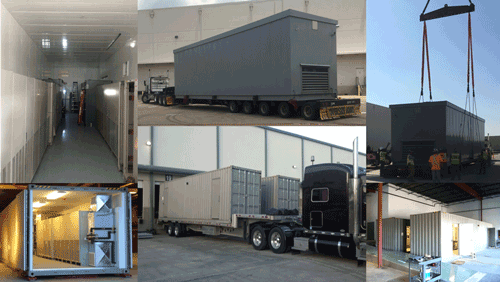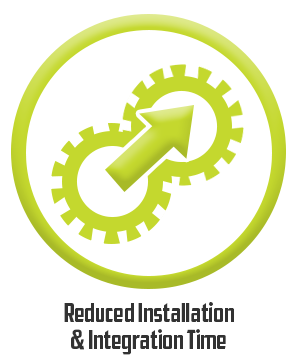BLOG
BLOG
Advantages of Containerized Solutions
OCTOBER 5, 2021
 |
by Michael Ruhe, Product Manager Engineered Solutions |
The amount of data being transmitted and processed each year is growing with the popularity of streaming services, IoT applications, and the enterprise shift to a hybrid or cloud-based model. Over the last year and a half, the shift to a mainly remote workforce has further increased the demand placed on data centers.
As such, many cloud and colocation data center operators are building at a record pace and looking for every conceivable advantage that will enable deploying their resources in a quick, reliable, and cost-effective manner.
One such approach that these operators are employing is the use of modular, or pre-fab, construction and containerized power systems over the traditional stick build.
The space required for the future cooling and power systems needs in a traditional stick build can lead to an overall inefficient use of space and an undesirable decrease in the revenue generating white space.
On the other end of the spectrum, if the necessary expansion of a traditional data center outpaces the planned expansion, the data center can become undersized and cause owners to sacrifice additional potential profits.

Modular construction and containerized designs offer many advantages that can help alleviate these concerns and should be considered when designing a new build or even upgrading an existing data center.
While there are many benefits to using the modular or containerized approach, it might not always be the best fit for a particular data center build. For example, depending on the location of the site, increased security may be warranted and more easily achieved with a traditional facility than a container.
It is always best to have a discussion with your partners and vendors to evaluate the pros and cons of a modular approach on your future designs to determine the best solution for your unique application.
Stay up-to-date on industry trends & insights
Be the first notified of new blog posts
By submitting this contact form, you agree that a representative(s) of Mitsubishi Electric Power Products, Inc. (MEPPI) may contact you using the information you provided. In accordance with our Privacy Policy, we will never share or sell your personal data.

